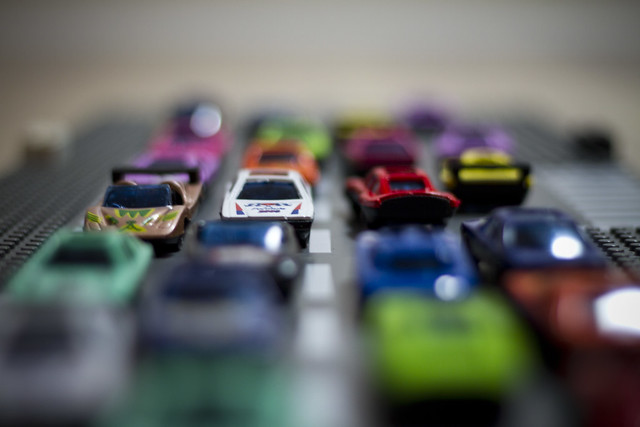
 The State of Copenhagen Congestion by Lars Barfred
The State of Copenhagen Congestion by Lars Barfred
(with additional information by Mikael Colville-Andersen)
Read Part 2 of the series here.
I previously and enthusiastically wrote about the Copenhagen congestion ring which most people, at the time, thought was a done deal. The plan was later scrapped but I am going to cover what really happened, before and since, and what will be the result of the government’s Congestion Commission, which has been charged with developing alternate solutions.
I am going to cover all this in a series of articles on Copenhagen and congestion, which I hope will be relevant to many other bicycling/active transport advocacy agents. About 15 years back, a majority in the Copenhagen City Council agreed that car traffic had surpassed any reasonable level and decided that car traffic must be forced to remain at 1996 levels - at the most. When I tell you that… - Today, 8% of Danes die a premature death due to car accidents, car noise and air pollution. - Cars occupy 5-20 times as much infrastructure capacity as any other commuter modality we know in Copenhagen, so if you want to fight congestion, you need to change modal share from cars to other modes of transportation. -Car infrastructure is ten to 25 times as expensive as bike infrastructure and, in most cases, research from Aalborg University shows, almost never returns reasonably on investment, due to induced traffic. - Oh, yes, and the noise and air pollution decreases property values and workforce productivity. … it’s easy to understand why car growth had to be stopped. At the same time, Copenhagen is proud to call itself a bicycle city and pretty much believes it’s the best in the world. Although many of you from the Netherlands, many Danish and some Swedish and German cities know this might be a bit of an exaggeration.
The goals are aimed high. In the mid-2000´s the city decided to increase modal share from 34% to 50% by 2015.
In order to achieve this goal, they agreed with 18 neighboring cities on a congestion ring. An astonishing feat in its own right, as cooperation between the cities in the capital region is a rarity. The right-wing government at the time rejected the congestion ring so, you would think, the skilled politicians would fight congestion and automobile externalities in other innovative ways, maybe reduce parking, reduce road capacity, lower speed limits, increase parking prices –okay not innovative, but still effective by any standard. No, they did not. They waited. Hoping that the left-wing parties would win the general election and implement the Congestion Ring. So what did the city council do in the meantime? They invested in improved car mobility and did everything in their power to avoid slowing the growth rate of automobile traffic which, by now, has increased 20% since they decided it should stagnate.
In Copenhagen, new bike infrastructure is slow and can, for all intents and purposes, only be established in parks or on sidewalks, as car parking and car lanes cannot and will not be reduced. Sure, we have Nørrebrogade as an exception of the rule. But on average the city spends 11 times as much on new car infrastructure and maintenance, as on bicycle infrastructure.
This excludes state-sponsored investments in car infrastructure, such as freeways and the currently under-construction Nordhavns Tunnel, which will increase the near-capacity of the largest in-road to Copenhagen by 40%. When you include State sponsored infrastructure, cars exceed bikes by a factor 15. In addition, the city demands local developers to invest massively - against their own will - in new parking spaces, as if 3.6 parking spaces per car was not enough. When city-forced private investments in new parking lots are included, investments in car mobility in Copenhagen exceed bike infrastructure by a factor 41! Investments in public transportation, on average, exceed bicycle investments by a factor 25. This is not because public commuters are really cherished, but because all investments are poured into the most expensive kind. Like our Mini-Metro, which removes some city bus lines, pedestrians and cyclists from the surface - which incidently increases car mobility. The mini-Metro would be fine if it actually had any reach into those suburbs that are not serviced by the S-train network (the real metro, except that it mostly runs above ground). A light-rail system is faster than a mini-Metro of the Copenhagen size and costs about a fifth of the mini-Metro. It would accordingly give five times as much public service, but would reduce car mobility. The city considers light-rail a lower-class solution, more suitable for the less attractive suburbs. 1,5 % of Copenhagen infrastructure investments are channeled into the hopeless aim of increasing bicycle modal share from 36% to 50% before 2025. Did I mention that modal share for bikes has not increased since 2003/2004?
As the Social Democrats, who have spearheaded all new investments in cars and metro, like to say, “the car also has a right to be here.”
-To be continued
More articles by Lars Bafred.




